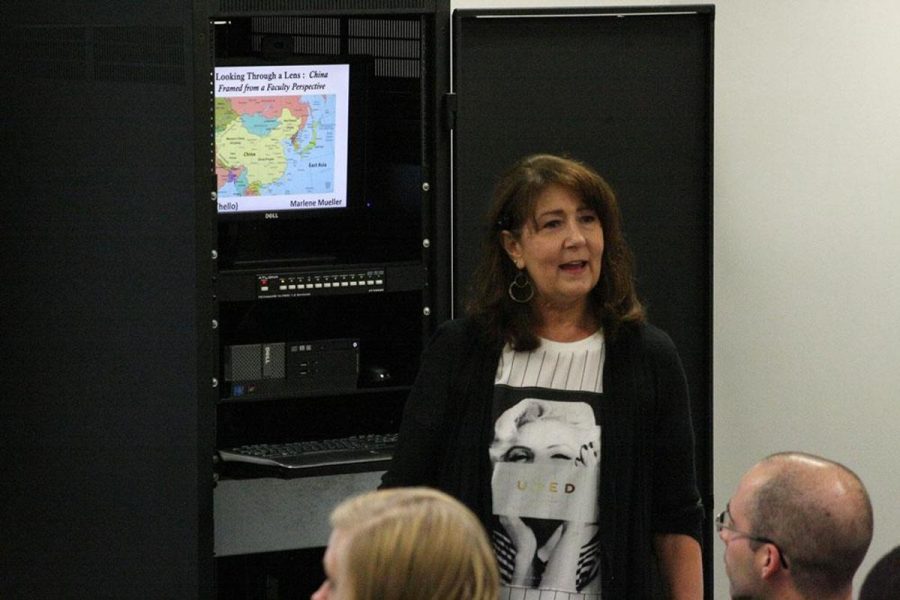Stories of Asia
Marlene Mueller talks about May trip in first fall colloquium
Marlene Mueller discusses her experience of traveling to China. As an artist, she related a lot of her experience in China to art.
September 30, 2015
Marlene Mueller, a drawing and painting professor at Wayne State, had the opportunity to travel to China last May. On Wednesday, she shared her experiences with students and faculty for the Humanities Department’s fall colloquium.
“Ní hao” Mueller greeted us. That means hello in Chinese.
Mueller was approached with the opportunity by the head of the travel abroad program, Gerald Conway. Most years, there are a few open seats for the Asia program that are available to faculty and staff.
Staff members are able to join Wayne State’s Asia program on the last two weeks of the trip, when they take a two-week tour through China. This trip comes after students spend the spring semester in Taiwan.
The group spent the first three days in Shanghai, followed by a 24-hour train trip to Jishou University in Hunan Province. Then they visited Xian, where they saw the famous Terracotta warriors.
Seeing the Great Wall of China was surreal for Mueller.
“You can’t imagine just how big the Great Wall is until you see it for yourself,” said Mueller.
They travelled primarily by tour buses and trains. The train was narrow and uncomfortable, but did have beds to sleep in for every passenger.
“The landscape was one of my favorite parts of China,” Mueller said. She showed her audience breathtaking photos of the views she had travelling around China.
As an artist, Mueller related a lot of what she saw to art. She showed a traditional Chinese painting, and compared it to an actual photograph of a waterfall. It was remarkably realistic, while at the same time showcasing the delicate nature of Chinese art style.
Although China has a massive population of 1.3 billion people, beautiful gardens are still prominent all over the country. Koi fish and lotus flowers float in calm ponds. River commerce is also a major part of life in China; many people live along rivers and use them to run their businesses.
The meals in China differ from meals in the United States. While meals are often hardy, the people are mostly petite. They eat a lot of vegetables, noodles and rice, with some meat.
The traditional industries in China involve silk, pearls, fashion and glassmaking. Mueller had the chance to learn a little bit about these businesses first hand. She even brought some silk and pearls back with her.
“Xie Xie,” said Mueller in closing, Chinese for thank you.







